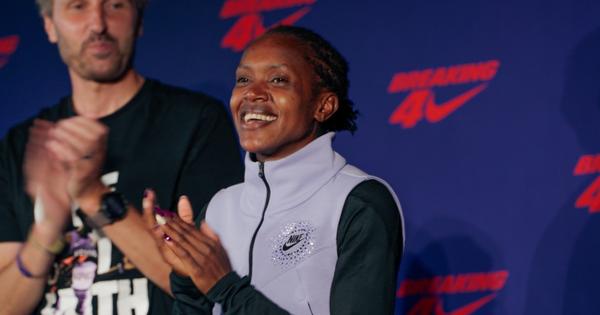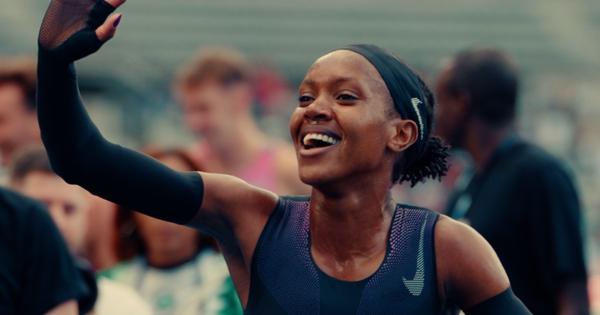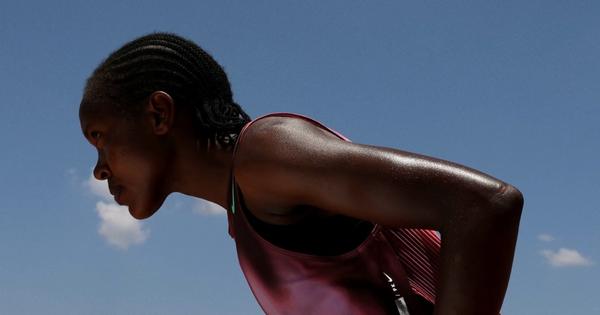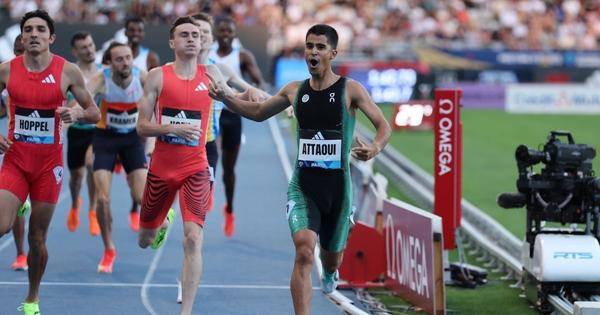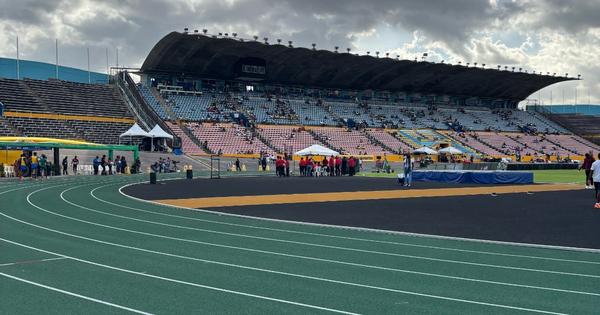By David Melly
July 2, 2025
Last Thursday, Faith Kipyegon, a phalanx of pacers, and all the technology Nike had to offer took over Stade Charléty in Paris to audaciously attempt something that had never been done before in human history.
And the results were… mixed.
The 31-year-old three-time Olympic champion didn’t wilt under the bright lights by any means. She stuck her nose in the pace and hit halfway just behind schedule (2:00.75 for 800 of 1609 meters, to be exact), ultimately clocking a 4:06.42 or 4:06.91, depending on how you count. It was the fastest mile ever recorded by a woman.
That said, the event wasn’t called “Breaking4:07,” and Kipyegon didn’t record a single lap under the 59.65-second tempo that sub-4 requires. Yes, it was an interesting novelty that built up the profile of one of the sport’s most likeable yet underappreciated stars, but if you judge success on the answer to the question “did she break four?” then it was also a failure
It’s important to recognize what the event was and was not. Breaking4 was a glorified brand activation and a live-TV science experiment—an opportunity for the largest shoe company in the world to showcase both its cutting-edge innovation and support for women athletes. It was not, nor did it ever pretend to be, a legitimate race environment or potential counterprogramming to the Diamond League (or any other professional sporting event). Most experts thought Faith Kipyegon was doomed to fail in her attempt, and yet plenty of track fans tuned in anyway.
The world’s most-watched time trial—at least since Eliud Kipchoge’s INEOS challenge in 2019—brought with it plenty to unpack from the sports media perspective, even if its result didn’t live up to its name.
The Good: The focus of Breaking4 was largely centered on Faith Kipyegon the athlete, not the clown-car of pacers or the high-tech apparel. (As it should be!) Kipyegon has to be one of the best introductions to athletic excellence currently on offer. There are only three active athletes who hold a world record and three Olympic golds: Kipyegon, Ryan Crouser, and Mondo Duplantis. She’s earned this moment and then some.
In a sport that struggles to break into the mainstream and often tries to do so on the back of its shortest track event, the 100 meters, it’s refreshing to see a female middle distance runner with broad international appeal centered so prominently. The pomp and circumstance of Breaking4 presented a pleasant contrast, for example, to the latest chapter of the Tyreek Hill nonsense. Inherent in this presentation was a deep respect for the history and culture of professional track and field, distance running specifically, and women’s sports generally.
It was also charming to see the odd assortment of Nike-sponsored pacers take to the track in permutations yet unseen in service of a common goal. It wasn’t quite an “Avengers, assemble” moment as much as it resembled everyone showing up to the Heathrow Airport at the end of Love, Actually, but it was fun nevertheless to see Craig Engels, Georgia Hunter Bell, Grant Fisher, and Elliot Giles, to name a few, toe the same start line while Eliud Kipchoge cheered from the sidelines.
And Big Swoosh deserves credit for going all-in on the promotion of this event. The main Nike social accounts were all full of Faith Kipyegon content leading up to the time trial, and it makes a real difference to get track and field on the feeds of @Nike’s 300 million Instagram followers. The event was also streamed for free on YouTube and accessible on Amazon’s Prime Video service, making it an unusually easy running event to tune into.
Faith Kipyegon may be the LeBron James of the women’s mile, but she’s not the LeBron James of… y’know, sports. So seeing Nike elevate her profile into that same tier feels like more than an acknowledgment of her storied career; it feels like Nike is putting their money where its mouth is to boost Kipyegon’s name recognition to a broader audience. In a Lap Count reader’s perfect world, Faith is as much a household name as Tiger or Serena, and Breaking4 felt like a genuine effort to make that dream a little more real.
The Bad: One of the most baffling elements of Breaking4 happened before Kipyegon ever set foot on the track: why the heck was Carl Lewis there?
The legendary Olympic sprinter and long jumper was perfectly pleasant on the pre-broadcast analyst panel, which also featured Olympic 800m champion Keely Hodgkinson and Nike coach Diljeet Taylor, herself a former pro middle distance runner. There are countless qualified athletes both active and former who have impressive medal shelves, receive a Nike paycheck, and would have thoughtful things to say about middle distance running… but instead, it feels like someone on the production team Googled “famous track and field guy” and made a hiring decision based on the first result.
Then there’s what happened in the moments after Faith crossed the finish line, but didn’t fully come to light until days later. When Kipyegon completed her journey ‘round the track and stopped the clock, it first flashed “4:06.91” before correcting to “4:06.42” about a minute later. At the time, it seemed like a bit of a moot point: either way, she ran faster than her official world record but was way off the 4:00.00 target. And anyone who’s watched a track broadcast on TV before knows that often the clock stops at a slightly different mark than the FAT-official time, although usually by one or two hundredths of a second.
But this was no timing gaffe—unbeknownst to the public and with no prior announcement, Nike was tracking (and touting) Kipyegon’s moving time, not her time from the firing of the starting gun. Had she run something like 4:00.3 and Nike had corrected to 3:59.8, this would’ve been a way bigger source of controversy, but instead it was notable only by the weird vagueness with which Nike let the information trickle out. The statement the company ultimately provided to Runner’s World is one of the most opaque, public-relations-by-committee bits of corporate gobbledegook ever typed out.
For an event where so many racing conventions were being defied in the name of performance optimization, it shouldn’t be a big deal to also change the way the race is timed. The unforced error was simply not telling people first and being evasive about it when confronted. The race wasn’t official anyways, so why not just be proactive and honest with your communications?
The Rest: The timing controversy, while marginal and unimportant, speaks to something fundamentally frustrating about how this event was messaged after the fact. Seemingly nobody involved was downplaying the monumental task being laid upon Kipyegon’s shoulders, but everyone was also adamant that a sub-four mile was possible.
Yet, after the race, Patrick Sang, Kipyegon’s coach, mused: “Looking back, is there anything that we could have done better? I don't think so. We gave our best in planning and execution, and today, she gave her best.”
How can both things be true? That Faith could have broken four minutes, but also couldn’t have done anything better?
Nike’s social media after the race chose an optimistic approach, focusing on the world-best performance and reiterating the inevitability of an eventual female sub-four. It’s understandable that the brand wouldn’t want to imply that Kipyegon or the team responsible for her tech hadn’t done their jobs. But it creates a mind-bending cognitive dissonance to dance around reality for the sake of a good narrative.
It might be foolishly naive to beg for authenticity from an event that was as much sports marketing as sport, but there was an opportunity here to do something radical. Nike prides itself on its unconventional, attention-grabbing marketing tactics. The standard response to taking a big swing and coming up short is to fire up the spin machine to find the positive angle, but it can feel inauthentic to try and frame everything as a success.
To quote Jedi Master Yoda, “pass on what you have learned: strength, mastery, yes, but also weakness, folly, failure… The greatest teacher, failure is.” The radical and more interesting move here would be to embrace what was ultimately a failed attempt to make history. We tried to do something, and we came up short: let’s figure out why.
The greatest achievements in history almost universally came after years of trial and error. We humans rarely get anything right on the first try. The Wright Brothers smashed up a bunch of wooden airplanes on the beach before they finally got one off the ground. More aptly, Roger Bannister spent all of 1953 running in the 4:02 to 4:03 range. Learning to process disappointment, adapt, and grow is important role modeling for young athletes all over the world and is far more relatable than winning a gold medal.
When the story of Faith Kipyegon is complete, Breaking4 will be an asterisk one way or another. It’ll either be seen as a fun bit of trivia, a footnote on the career of the greatest miler of the 21st century when she ran out of conventional milestones to achieve, or, like Breaking2, it’ll be a precursor we reflect on in the next year or two when Faith runs 3:59 in Breaking4 Part 2: 4Real This Time.
What it won’t do is define Kipyegon’s legacy. She’s already bigger than any one day on the track. Instead, Faith will be remembered for more than a decade of consistent dominance, a medal shelf richer than a pirate’s chest, and the generations she inspired along the way.

David Melly
David began contributing to CITIUS in 2018, and quickly cemented himself as an integral part of the team thanks to his quick wit, hot takes, undying love for the sport and willingness to get yelled at online.
